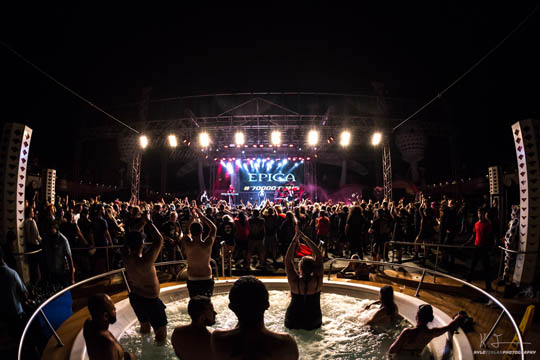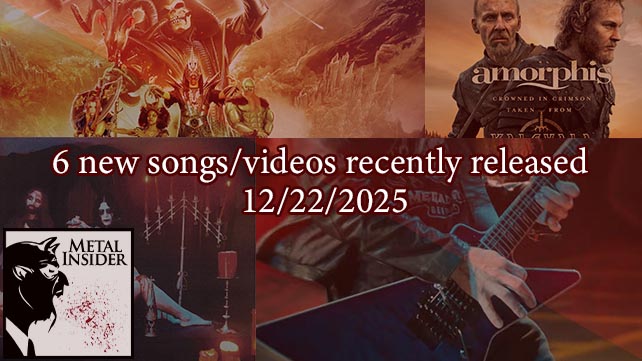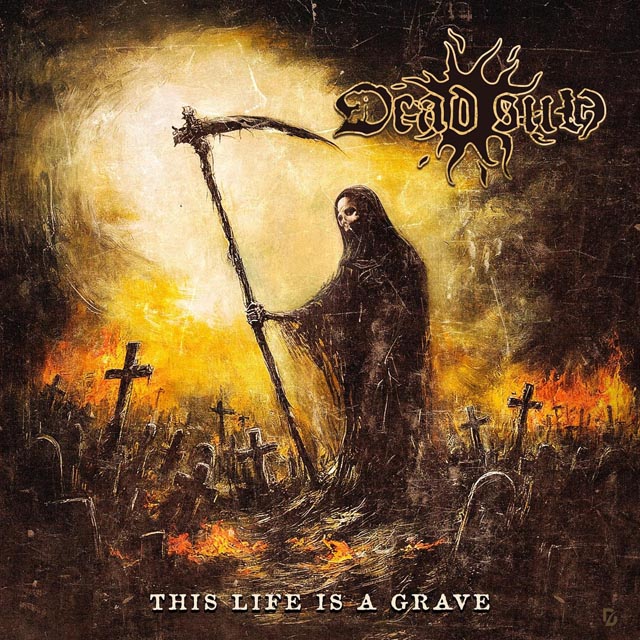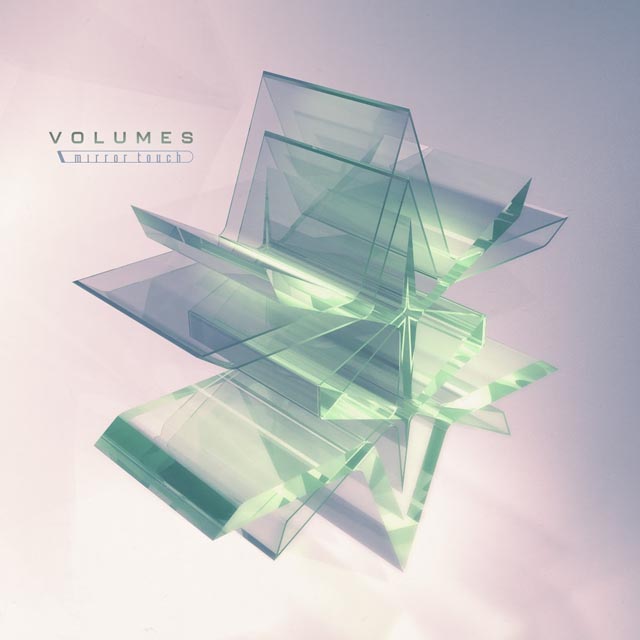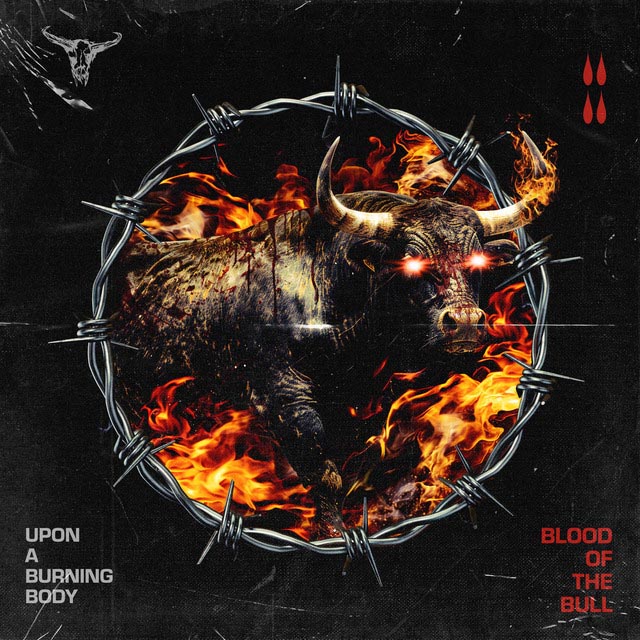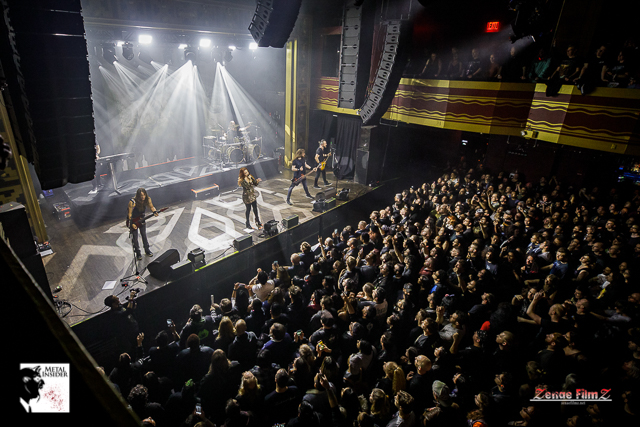
2020 has hit us hard with uncertainties and a pandemic where many wouldn’t expect to experience in their lifetime nor prepared for something that feels like it came out of a science fiction novel. Between January 1st to today, May 13th, there have been 297,324 COVID-19 related deaths (and counting). While different parts of the world have been taking measures working on ways to reopen safely, there is still a big question mark on large gatherings.
And yes, it’s confusing and an endless nightmare as the answer remains uncertain on how things will unfold. While events such as 70000tons of metal, a cruise with over 3,000 metalheads from around the globe, and at least sixty bands performing for four days straight is currently scheduled as planned for January 2021, Slipknot’s first-ever cruise initially set for August this year is no longer happening. You can also take a full look at when cruises will reopen here. Georgia’s live venues and bars will reopen on June 1st, but it’s uncertain what the protocol and capacity will look like as this year’s ProgPower will have a more definitive answer, whether it will happen or not by July 1st. On May 18th, we will soon see how the state of Arkansas’ social distancing concert will turn out. As each state, country, and region are implementing different rules, which raises the question as to when shows will return to each city along with how tours will take place.
As we’ve read the plans to restart the concert industry from Live Nation’s CEO, a near thirty-page reopening guide was recently released, addressing how concerts will “safely” resume by highlighting drastic changes. In other words: nearly everything we love about shows, being up close and personal, the moshing, crowdsurfing, hugging, conga pits, etc.. will remain on PAUSE for the foreseeable future. And check-in points could be much longer than we’re used to, which also goes for air travel. Two keywords we have to get used to are uncertainty and change. With these uncertainties, we can only expect to see virtual tours as our new normal for quite some time. For those eager to attend a show as early as possible, The Event Safety Alliance Reopening Guide is a collective work by industry professionals to help plan to reopen during the coronavirus pandemic. You can read the full guide here.
A major key point from the guide is: Moshing and crowdsurfing will be prohibited:
“General Admission Venues. General admission events present many of the same challenges as seated events, plus additional concerns that may delay the reopening of GA spaces until more patrons voluntarily comply with social distancing and face covering requirements. A few obvious changes will be necessary whenever GA events do reopen. Patrons cannot all stand at the front of the stage like they are accustomed; moshing and crowd surfing are violations of social distancing per se and must be absolutely prohibited during this pandemic; even hallways and smoking areas where patrons congregate will have to be monitored to enforce health policies. Here are some simple ways to remind GA patrons of the importance of social distancing. High conspicuity gaff tape on the floor of an indoor space, or spray chalk, survey flags, and cones for outdoor spaces, to mark six foot (two meter) separation. Rope barriers and stanchions or bike rack to physically separate patrons.”
We listed a few additional bullet points taken directly from the guide below:
-
There is no guarantee of an illness-free event even if you follow everything in this Reopening Guide.
-
If small events and venues can reopen without increasing COVID-19 transmission rates, it will open the door for progressively larger spaces to implement similar measures on a larger scale in the future. If, on the other hand, the first attempt at a safe reopening is a failure, that would set back the entire event industry.
- You may even consider proactively postponing or cancelling where you cannot effectively activate emergency plans without exposing workers and patrons to greater risk of transmission. The new normal gets complicated in a hurry.
-
Before reopening, they must add their new health procedures and expectations, such as social distancing and face covering requirements and longer wait times.
-
“Virtual” Queuing for Ingress. Event organizers should consider ways to schedule staggered ingress in order to minimize lines for wanding, bag check, and ticket scanning. Virtual queuing is a modern version of the familiar concept of metered access to the front of a line. Consider the following to spread arrival time and manage demand at the entrance. Events with a specific start time could schedule patron arrival times. During the ticketing process, patrons could select their ingress time and location, which can be coordinated with public transportation or rideshare vehicles. A limited number of unscheduled entries is recommended to accommodate patrons stuck in traffic or physically unable to sit in a seat for a long time.
-
Space Requirements. Additional space may be required to accommodate longer but less densely packed lines waiting to enter the venue. How Much Space. In a six foot (two meter) social distancing model, up to 36 square feet (4 square meters) per unrelated group will be necessary. Where to Queue. It is important to separate pedestrians from vehicle traffic, and to preserve room for other pedestrians to pass.
-
Screening. Once patrons reach the front of the line outside the venue, there should be a new screening process. Temperature and Health Screening. Outside the venue perimeter, a worker wearing a face covering, gloves, and medically-identifiable clothing such as scrubs, who has been approved by the Infection Mitigation Coordinator, should take the temperature of every patron and conduct a brief visual screening for symptoms of fever or infection.
-
Bag Check. Even during a pandemic, it remains important for security reasons to keep prohibited items out of the venue. In order to avoid touching patron personal items, event organizers may wish to enforce a small clear bag policy in which patrons open their own bags for inspection. Alternatively, some event organizers may prohibit bags, although exceptions will likely be necessary for medicine or personal hygiene products.
-
Magnetometers and Pat-Downs. Walk-through magnetometers are effective at detecting metallic objects while allowing security workers to maintain social distance. Hand wands are a less costly alternative which still allow no-contact metal detection, but they require the security worker to be closer than six feet (two meters) from the patron, so they are less optimal from a health perspective.
-
Ticket Scanning. Paper tickets and cash require physical contact between patrons and workers that can be avoided at many events. At ticketed events, tickets can be made available in advance and online only. Electronic tickets can be scanned by ticket-takers wearing face coverings and gloves, or patrons could check themselves in at self-service kiosks outside the health and security screening area.
-
Face Covering and Glove Requirement. Patrons who are required to wear face coverings and gloves at ingress should put on their own or purchase them from the venue.
-
Disability Accommodations. New health screening measures may require new accommodations for persons with disabilities. For example, deaf patrons who read lips may require screening from a worker wearing a clear face covering or one with a see through window over their mouth. An event space that reduces points of ingress or egress must ensure continued accessibility. Venues that temporarily reduce capacity should confirm that they still offer enough accessible seating, including companion seats, to comply with disability laws.
-
After events that have a definite end such as concerts or sporting events, patrons nearest the exits should leave first, by row or section, in order to clear space for patrons further inside to follow.
-
Restrooms. Workers should limit occupancy of restrooms to ensure social distancing. Unless portable restroom facilities are added, this will likely result in patrons waiting outside the restroom doors. The area where they are waiting will require monitoring to preserve (a) appropriate space between patrons and (b) an easily discernible line to avoid conflict about where the line begins. Regarding all social distancing measures.
-
Seated Venues. In venues with reserved seating, there is likely to be some flexibility in the number of seats to remove or kill in order to maintain social distancing between unrelated patrons. Some events foreseeably draw crowds that attend in groups, which suggests that perhaps a venue can safely accommodate more patrons for that event. The recommended spacing of six feet (two meters) does allow room for judgment, but if someone gets sick, that decision will certainly be judged.
-
General Admission Venues. General admission events present many of the same challenges as seated events, plus additional concerns that may delay the reopening of GA spaces until more patrons voluntarily comply with social distancing and face covering requirements. A few obvious changes will be necessary whenever GA events do reopen. Patrons cannot all stand at the front of the stage like they are accustomed; moshing and crowd surfing are violations of social distancing per se and must be absolutely prohibited during this pandemic; even hallways and smoking areas where patrons congregate will have to be monitored to enforce health policies. Here are some simple ways to remind GA patrons of the importance of social distancing. High conspicuity gaff tape on the floor of an indoor space, or spray chalk, survey flags, and cones for outdoor spaces, to mark six foot (two meter) separation. Rope barriers and stanchions or bike rack to physically separate patrons.
-
GA events are challenging to supervise as it is – voluntary social distancing and face covering will likely require a level of widespread patron education that, as of this writing, does not exist. Even more than figuring out how to enforce social distancing in undifferentiated spaces, teaching patrons to proactively engage in healthy behavior may be the first hurdle GA event organizers should try to clear.
-
Merchandise. Contactless Ordering. Items for sale can be posted on a web site or event app that allows for mobile ordering and on-site pickup. Queuing. Mark merchandise sales lines on the floor, with barricade, or rope and stanchion, patrolled by guest services workers to provide information and enforce social distancing. Touchless. No trying on merchandise. Only workers may touch items for sale. Contactless Payment. Point of sale systems that use Apple Pay or a similar app eliminate the need for workers to touch patron credit cards. Final Sale. No returns or exchanges. All sales are final. Spacing. Merchandise sellers must be spaced far enough from each other so patrons can wait in line while maintaining social distance and not block access for pedestrians passing by.
-
Booking an Event Space. Site visits and venue tours for marketing and booking should be replaced by virtual tours to the extent feasible. Companies seeking to book a space should prepare to submit a health and safety plan consistent with these guidelines regarding the risks particular to their event.
-
Social Distancing Musicians. The authoritative guidance requiring not less than six feet (two meters) of social distance may have to be expanded for singers and musical instrument players. Musicians often breathe deeply and expel aerosols further than people engaged in non-physical activities. Their performance space, including on stage and in orchestra pits, should be arranged to maximize social distancing while allowing at least some of them to perform together.

